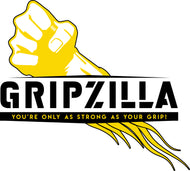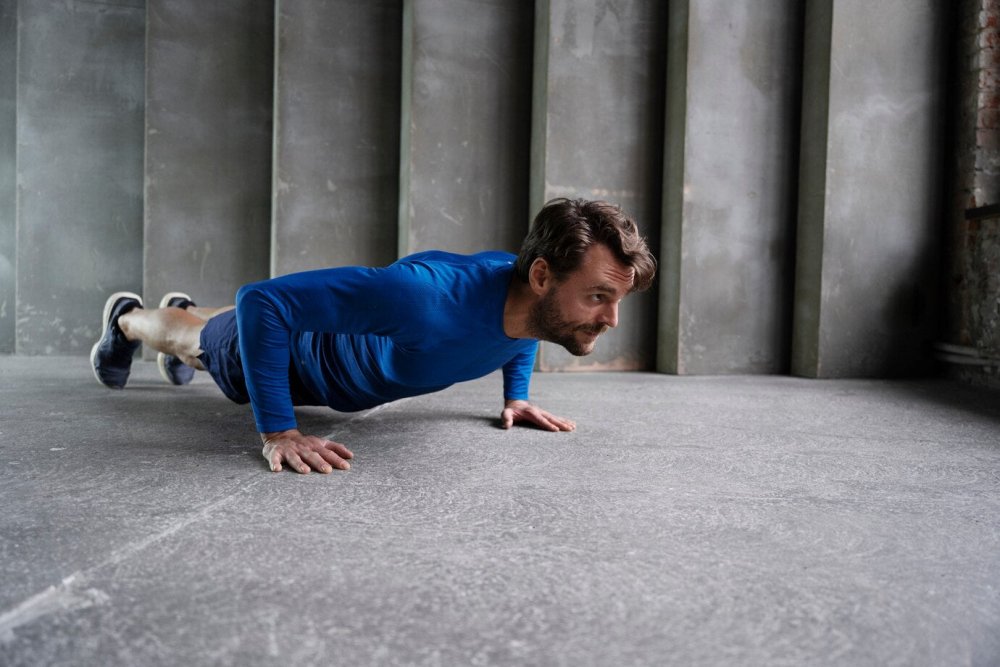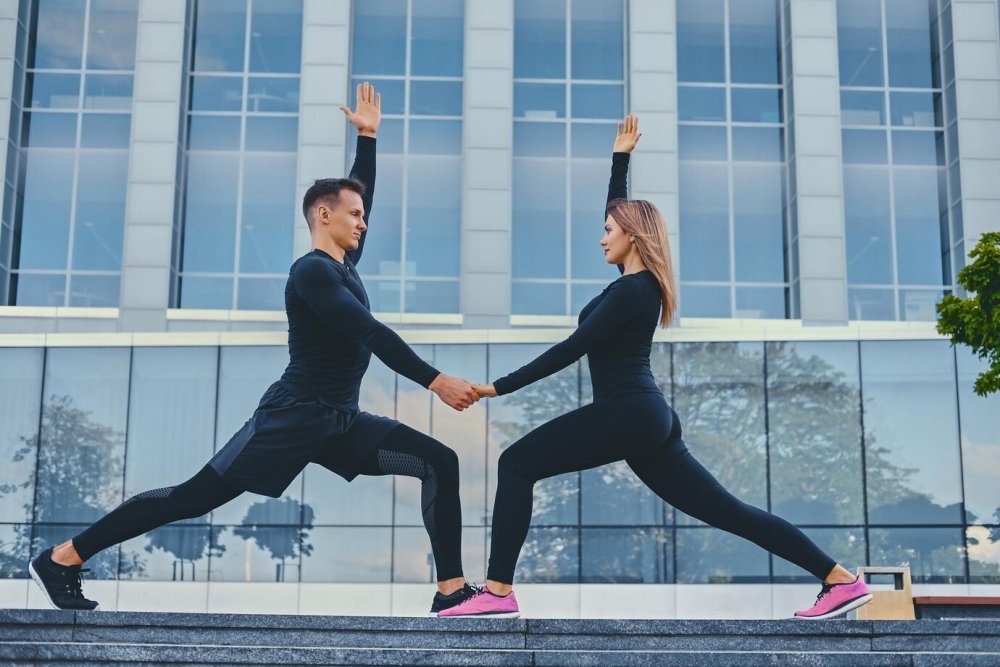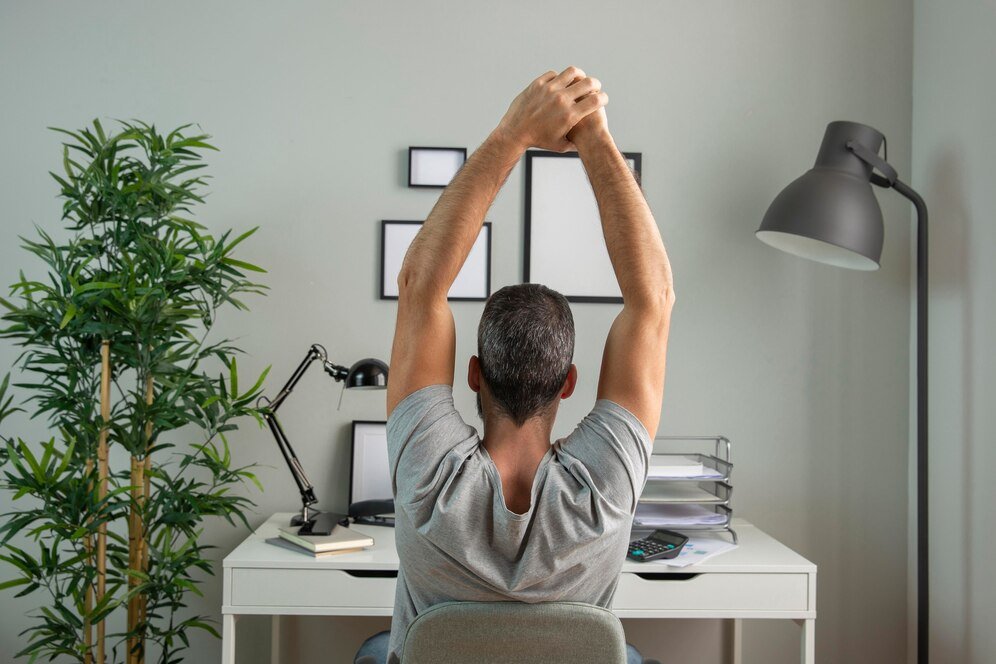Are you tired of feeling limited by your small living space when it comes to working out? Don't you have an entire planet to work out on?
Well, you make a fair point.
The outdoors is vast and glorious, and ideal for activities like hiking, cycling, yoga in meadows, or swimming in lakes.
But as much as we enjoy those, let's be honest - packing up all the equipment and schlepping it to some remote location is an ordeal.
And sometimes, a person just wants to squeeze a quick sweat sesh in between tasks without much fuss.
Enter: the small space bodyweight workout.
Whether you live in a tiny apartment, a cramped dorm room, or simply prefer the convenience of working out at home, the workout plan we are going to present will be perfect for you.
So, pour yourself a big glass of water, clear away the clutter, and get ready to feel the burn in places you didn't even know could burn.
It's time to get moving:
Related: Hotel Room Workouts
Best Bodyweight Workouts For Small Spaces
Listed below are the small space bodyweight workouts you can do without any equipment (or little equipment):
1. Bodyweight Squat
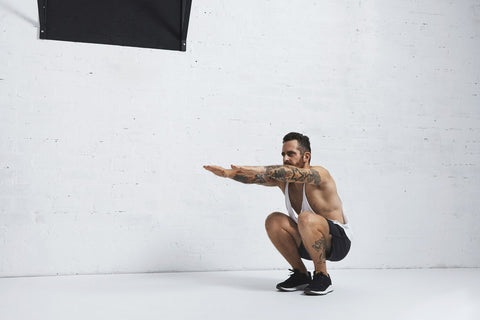
Bodyweight squats are a versatile and effective exercise that primarily targets the muscles of the lower body, including the quadriceps, hamstrings, and glutes. Additionally, they engage the core for stabilization and balance.
Squats are excellent for improving lower body strength, flexibility, and overall functional fitness.
They mimic daily movements like sitting and standing, making them a practical choice for enhancing everyday activities.
Incorporating bodyweight squats into your small-space bodyweight workout routine can contribute to better posture, increased joint mobility, and a toned lower body.
Starting Position:
- Stand with your feet slightly wider than shoulder-width apart.
- Ensure your toes are pointing slightly outward.
Execution:
- Inhale and engage your core.
- Lower your body by bending at your hips and knees.
- Keep your back straight, chest up, and knees aligned with your toes.
- Aim to lower your hips as if you are sitting back into a chair.
Lowest Point:
- Go as low as your flexibility allows, ideally until your thighs are parallel to the ground.
- Ensure your knees do not extend beyond your toes.
Returning to the Starting Position:
- Exhale and push through your heels.
- Straighten your hips and knees to return to the starting position.
- Repeat for the desired number of repetitions.
2. Tricep Dips

Tricep dips are a potent bodyweight exercise that targets the muscles at the back of the arms, helping to tone and strengthen the triceps.
This exercise also engages the shoulders and chest, providing a comprehensive upper body workout. Tricep dips are particularly beneficial for improving arm definition and endurance.
As a compound movement, they activate multiple muscle groups simultaneously, making them an efficient choice for building upper body strength.
Regular inclusion of tricep dips in your workout routine can lead to increased arm functionality, enhanced pushing strength, and improved overall upper body muscular balance.
Starting Position:
- Sit on the edge of a stable chair or bench.
- Place your hands next to your hips, fingers pointing forward.
- Extend your legs in front of you, heels on the ground.
Execution:
- Inhale and lower your body by bending your elbows.
- Keep your back close to the chair or bench.
Lowest Point:
- Lower your body until your elbows are at a 90-degree angle.
- Ensure your shoulders stay down, away from your ears.
Returning to the Starting Position:
- Exhale and push through your palms.
- Straighten your arms to lift your body back to the starting position.
- Repeat for the desired number of repetitions.
3. Plank

The plank is a fundamental isometric exercise that targets the core muscles, including the rectus abdominis, obliques, and transverse abdominis. It also engages the muscles in the shoulders, back, and legs, creating a full-body workout for small and congested places.
Planks are renowned for their ability to improve core strength and stability, leading to better posture and reduced risk of lower back pain.
This exercise challenges the muscles to maintain a neutral spine position, enhancing overall body awareness and control.
Moreover, planks contribute to increased endurance and can be modified to accommodate various fitness levels, making them a versatile and accessible choice for core training.
Starting Position:
- Begin on your hands and knees.
- Place your hands directly below your shoulders.
- Extend your legs straight back, toes on the ground.
Execution:
- Engage your core and create a straight line from your head to your heels.
- Hold this position, keeping your body in a rigid plank.
Maintaining the Plank:
- Keep your shoulders directly above your hands.
- Don't let your hips sag or push them too high.
Ending the Plank:
Hold for the desired duration.
Lower your knees to the ground to release the plank position.
4. Glute Bridge

The glute bridge is a targeted exercise that isolates and activates the muscles of the glutes and lower back.
By lifting the hips toward the ceiling, this movement strengthens the gluteal muscles, contributing to improved hip stability and functionality.
Glute bridges are especially beneficial for individuals looking to tone and firm the buttocks. This exercise also engages the core and lower back, promoting a stable and resilient posterior chain.
Incorporating glute bridges into your routine can enhance athletic performance, support proper posture, and reduce the risk of lower back discomfort.
Starting Position:
- Lie on your back with your knees bent and feet flat on the floor, hip-width apart.
- Keep your arms by your sides with palms facing down.
Execution:
- Engage your core and press through your heels to lift your hips off the ground.
- Squeeze your glutes (buttocks) at the top of the movement.
- Keep your back straight and avoid arching excessively.
Top Position:
- Create a straight line from your knees to your shoulders.
- Hold the position for a moment to maximize the contraction in your glutes.
Returning to Starting Position:
- Slowly lower your hips back down to the ground without fully resting.
- Repeat for the desired number of repetitions.
5. Burpees

Burpees are a dynamic, full-body exercise for small spaces and apartments that combines strength training with cardiovascular conditioning.
This high-intensity exercise targets multiple muscle groups, including the chest, shoulders, arms, legs, and core. Burpees elevate the heart rate rapidly, promoting cardiovascular fitness and calorie burning.
The combination of squatting, planking, and jumping makes burpees an efficient compound movement that challenges both strength and endurance.
This exercise is often included in interval training and functional fitness programs due to its ability to improve overall conditioning, agility, and explosiveness.
Starting Position:
- Stand with your feet shoulder-width apart.
Execution:
- Drop into a squat position, placing your hands on the ground in front of you.
- Kick your feet back to a plank position, keeping your arms extended.
- Perform a push-up (optional).
- Jump your feet back towards your hands into a squat position.
- Explosively jump into the air, reaching your arms overhead.
Completing the Movement:
- Land softly and smoothly transition into the next repetition.
- Maintain a consistent pace and rhythm.
6. Superman with 90/90 Retraction
The Superman exercise with 90/90 retraction is a targeted movement that focuses on the muscles of the lower back, upper back, and shoulders.
By lifting the chest and legs off the ground while retracting the arms in a 90-degree motion, this exercise engages the entire posterior chain. It is particularly effective for strengthening the erector spinae muscles along the spine.
The Superman exercise promotes improved spinal stability and can be beneficial for individuals seeking to alleviate or prevent lower back pain.
Additionally, the 90/90 retraction enhances shoulder mobility and strengthens the upper back muscles, contributing to better overall posture and reducing the risk of imbalances in the back muscles.
Starting Position:
- Lie face down on the ground with your arms extended straight in front of you.
Execution:
- Lift your chest, arms, and legs off the ground simultaneously.
- Squeeze your shoulder blades together, bringing your arms back in a 90-degree angle motion.
- Keep your gaze down to avoid straining your neck.
Top Position:
- Hold the position for a brief moment, engaging your lower back muscles.
Returning to Starting Position:
- Slowly lower your chest, arms, and legs back to the ground.
- Repeat the movement while maintaining control.
Conclusion
With a little creativity and thoughtful planning, your small space can be transformed into the perfect workout area, so constant progress is achievable.
Utilize full body movement exercises like squats, lunges, push ups and burpees to maximize your efforts and watch as these basic moves challenge your muscles in imaginative ways.
Get creative – equipment isn’t just weights.
Lifts and throws of medicine balls or core stabilization using TRX bands are a great way to find new dimensions of each exercise.
Plus, all you need for most bodyweight exercises is right inside your home already.
Having an area that allows for the basics while still being capable of switching up movements is key. Space may be limited but that doesn't mean it's not possible to create productive workouts within it.
